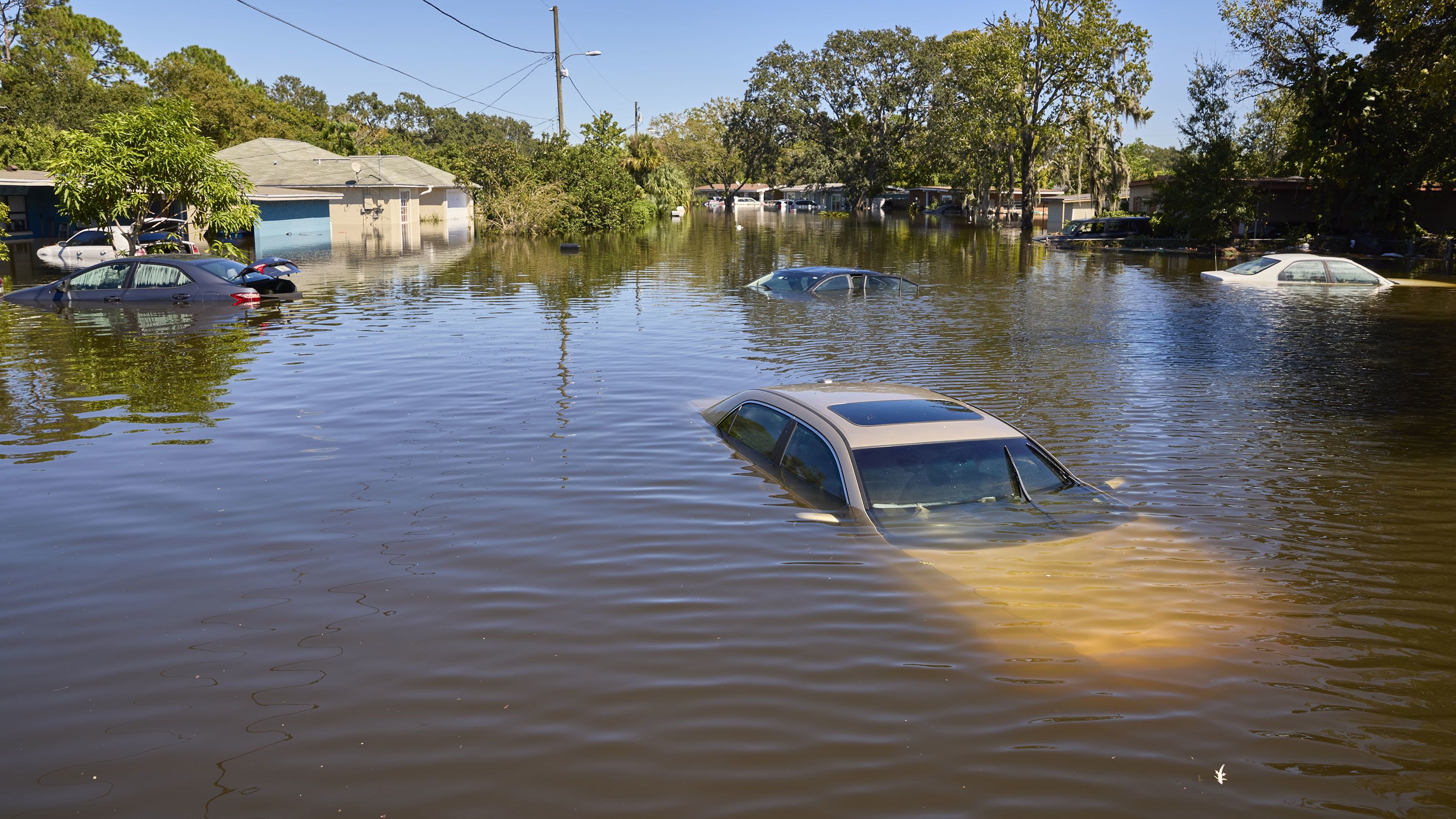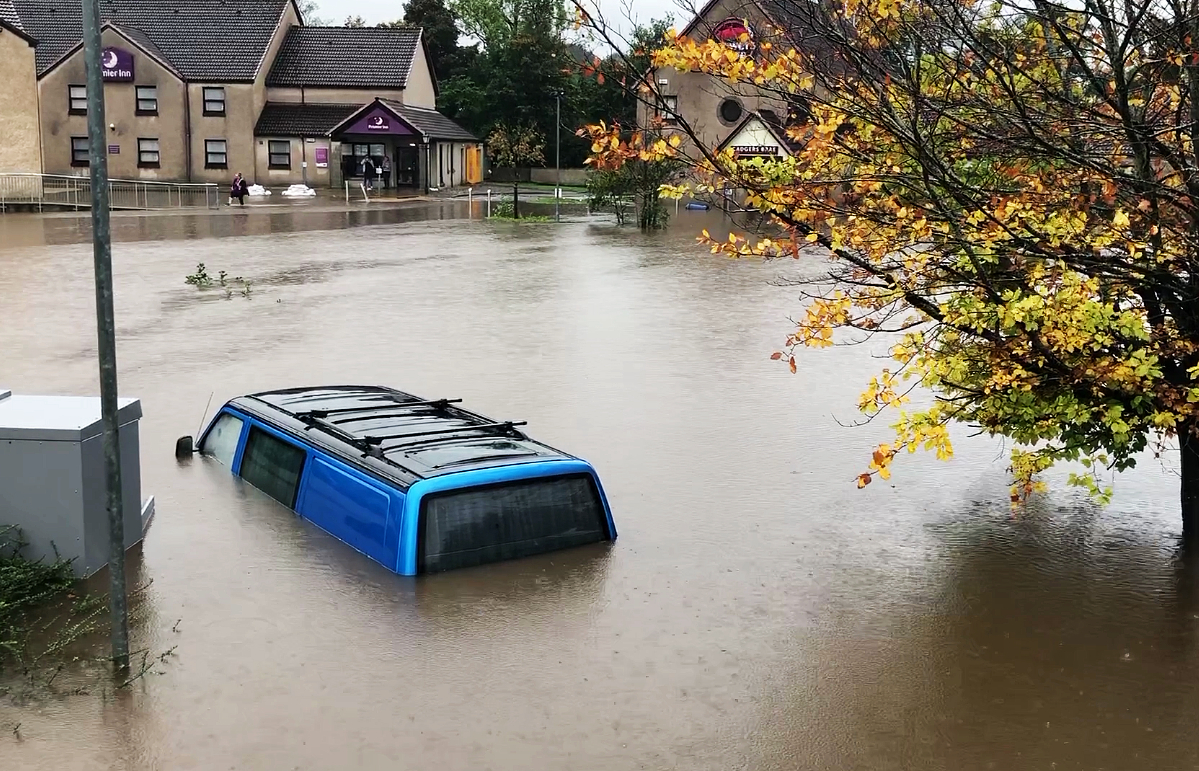New Jersey, a state known for its vibrant communities and busy roadways, faced a truly challenging time recently. On a Monday night, and specifically on July 14, 2025, a series of very powerful storms swept across the region. These storms, you know, they really brought a lot of water. This water led to widespread flooding, causing significant trouble for many residents. Roads became impassable, power went out for countless homes, and the state's governor, Phil Murphy, had to declare a state of emergency. It was, in a way, a moment that showed just how quickly nature can change our daily lives.
The storms, which caused flash flooding, spread across a very large area. They impacted metropolitan places from New York City all the way down to Washington, D.C. In New Jersey and New York, the rain was torrential, meaning it poured down with great force. This forced the closure of major highways, stopped subway lines from running, and even caused delays for flights. It was a situation that, basically, brought much of the region to a standstill for a time.
This article will look at what exactly happened during these events. We will also talk about the impact on towns across New Jersey, including those that got the most rain. More importantly, we will share some ideas on how you can keep yourself and your family safe when water levels rise, and what steps you can take to be ready for such events in the future. It's about, you know, learning from what happened and moving forward with more preparedness.
Table of Contents
- The Recent Deluge: What Hit New Jersey?
- Why Does New Jersey Face Such Flooding?
- Staying Safe When Floods Strike
- Looking Ahead: Building Resilience
- Frequently Asked Questions About Flooding in NJ
The Recent Deluge: What Hit New Jersey?
The storms that arrived on Monday night, July 14, 2025, were, you know, quite something. They brought a tremendous amount of rain to many parts of New Jersey. This water came down very quickly, causing what people call flash flooding. Flash flooding means water levels rise with much speed, often catching people off guard. It's a situation that can turn a calm street into a fast-moving river in a very short time, which is, in some respects, quite scary.
A State of Emergency Declared
As the water levels rose and the problems grew, New Jersey Governor Phil Murphy took a very important step. He declared a state of emergency for the entire state. This declaration, you know, allows for certain resources to be used more quickly. It also gives officials the ability to act fast to help people in need. The governor, basically, urged everyone to stay off the roads. This was a message meant to keep people out of harm's way, given the dangerous conditions that were developing.
The state of emergency was a direct response to the intense thunderstorms that hit. These storms, you know, they really packed a punch. Local officials urged residents to seek safety on higher ground. This advice is always important when water starts to rise, as being on higher ground can protect you from the immediate dangers of the water. It's a simple step that can make a big difference, really.
Widespread Chaos: Roads, Power, and Travel
The impact of these storms was, quite frankly, felt across much of New Jersey. Heavy rains during the evening brought a lot of trouble. Roads became impassable because of the deep water. This meant many people could not get to where they needed to go. Power outages were also a big issue, leaving many homes without electricity. It's a frustrating thing when the lights go out, especially when you're dealing with other problems.
The flash flooding, you know, stranded vehicles in roadways. People found their cars stuck in water that was too deep to drive through. This led to dramatic rescues in some areas. Imagine being in your car and suddenly water is all around you; it's a very frightening situation. Beyond New Jersey, the storms also caused subway lines to close and led to delays for flights. This shows just how far-reaching the effects of such weather can be, you know, impacting travel for many people.
Tragic Losses in Plainfield
Perhaps the most heartbreaking part of these events was the loss of life. In Plainfield, New Jersey, two people died. This happened after their vehicle was swept into Cedar Brook. This occurred at the height of the storm, when the water was at its most dangerous. It's a truly sad outcome, and it highlights just how serious and dangerous flash flooding can be. The water, you know, it can move with incredible force, enough to carry away a vehicle.
The deaths in Plainfield, in Union County, serve as a very stark reminder of the risks. The heavy rain, which pummeled much of the state, created extremely dangerous conditions on the roads. It's a very clear message that when officials say to stay off the roads during such weather, it's for a very good reason. The dangers are, apparently, very real, and the consequences can be tragic.
Why Does New Jersey Face Such Flooding?
New Jersey, you know, is in a location that can make it prone to water problems. Its geography, with many rivers and coastal areas, means water has many places to gather. When there are very intense rain events, like the ones on July 14, 2025, the ground can only absorb so much water. After that, the water has nowhere to go but up and out, onto roads and into low-lying areas. This is, basically, how flooding happens.
Sometimes, too, the way our towns are built can play a part. Lots of paved surfaces, like roads and parking lots, mean less ground for water to soak into. So, the water runs off these surfaces very quickly. This can overwhelm drainage systems, which are designed to handle a certain amount of water but not always the huge amounts that come with very strong storms. It's a complex issue, really, involving both natural factors and human development.
Staying Safe When Floods Strike
Knowing what to do when water starts to rise is, arguably, the most important thing. Being prepared can make a big difference in keeping yourself and your loved ones safe. It's not just about what happens during the storm, but also about the steps you take beforehand. This kind of preparation, you know, can really help reduce the stress and danger when a flood warning comes.
Urgent Safety Advice
First and foremost, if you hear that there's a flood warning, or if you see water rising quickly, the very first thing to do is seek higher ground. This means moving to the highest floor of your home, or if advised, evacuating to a safer location. Never, ever, try to drive or walk through floodwaters. Just six inches of moving water can knock an adult off their feet, and a foot of water can sweep a vehicle away. It's, you know, much more powerful than it looks.
If your car stalls in water, leave it immediately and move to higher ground if you can do so safely. Do not try to restart the engine. Also, be aware of downed power lines. Water and electricity are a very dangerous mix. Stay away from any power lines that are on the ground. You should, you know, treat them as if they are live and dangerous. Keeping an emergency kit ready with things like water, food, and a first-aid kit is also a good idea. Learn more about emergency preparedness on our site.
Preparing Your Home and Family
Being ready before a storm hits is, actually, a huge part of staying safe. You can start by knowing if your home is in a flood-prone area. Check local maps or ask your town officials. If it is, you might want to consider flood insurance, as regular homeowner's insurance often doesn't cover flood damage. This is, you know, a very important financial protection.
Create a family communication plan. Make sure everyone knows how to get in touch if they get separated. Have a designated meeting spot outside your home and another one outside your neighborhood. Practice evacuation routes if you live in a low-lying area. Moving valuable items and important documents to higher floors or off-site storage can also protect them from water damage. You can find more tips on preparing your home for severe weather by visiting this page .
Looking Ahead: Building Resilience
The events of July 14, 2025, serve as a very stark reminder of nature's power. For New Jersey, it's a call to think about how we can live with water, rather than just react to it. This means, you know, looking at how our towns are built and how we manage our water systems. It's about making sure our communities are more resilient, meaning they can bounce back faster after a big storm.
This might involve improving drainage systems or even restoring natural areas like wetlands that can absorb excess water. For individuals, it's about staying informed and taking personal steps to be ready. By working together, from local governments to individual homes, New Jersey can, in a way, become better prepared for future weather events. It's a continuous effort, you know, that requires everyone's attention and cooperation. For more information on flood safety and preparedness, you can visit the Ready.gov website.
Frequently Asked Questions About Flooding in NJ
People often have questions when a big weather event happens. Here are some common things people wonder about when it comes to flooding in New Jersey:
1. What caused the recent severe flooding in New Jersey on July 14, 2025?
The severe flooding on July 14, 2025, was caused by very intense thunderstorms. These storms brought torrential rain that swept across parts of the Northeast, including New Jersey. The sheer amount of water that fell in a short time led to flash flooding, overwhelming drainage systems and causing widespread water issues.
2. Which towns in New Jersey were most affected by the recent storms?
While the storms impacted metropolitan areas from New York City to Washington, D.C., New Jersey faced a statewide emergency. Plainfield, NJ, was particularly hard hit, with at least two deaths reported there and damage across Union County. Other areas experienced flooded roads, power outages, and stranded vehicles, though specific town-by-town rain totals would show where the most water fell.
3. What should residents do if a state of emergency is declared due to flooding in New Jersey?
When a state of emergency is declared for flooding in New Jersey, residents are urged to take immediate safety measures. This includes seeking safety on higher ground and, very importantly, staying off the roads. Driving through floodwaters is extremely dangerous. Following official advisories from the governor and local emergency services is crucial to ensure personal safety.



